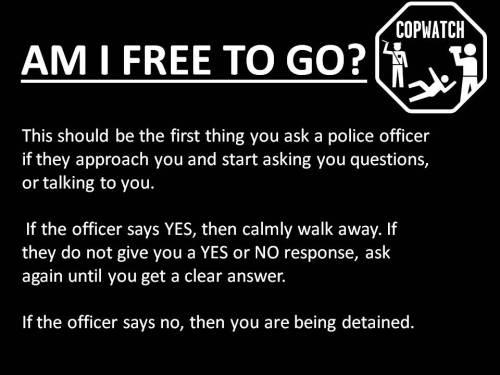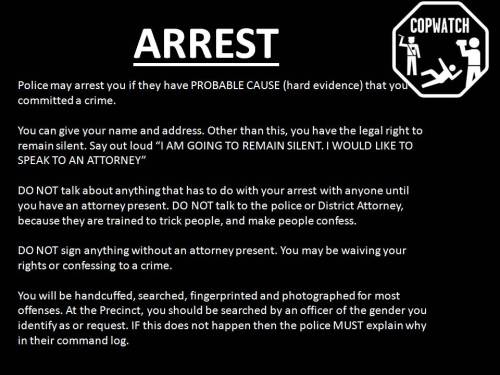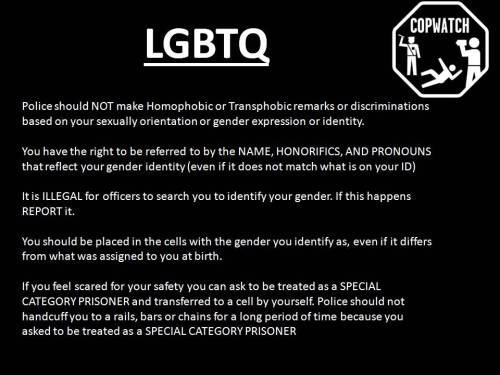21 posts
Keitashi-is-me - Keitashi - Tumblr Blog
Crash Course on MBTI: The Eight Functions (Part 1)

I was thinking of things to do on this blog, besides just character typings, and I thought about how to explain the basics of MBTI to people who may know nothing about MBTI, or people who are only aware of 16 personalities. So I will be doing a three part series on the very very basics of MBTI.
Understanding each cognitive function by itself is the first step of understanding MBTI as a whole, so that’s what this post will focus on. Part two will focus on stacking, and part three will focus on the types as a whole.
What is a cognitive function?
Cognitive functions are the bones of each Myer-Briggs type, the way each type operates in the world around them. Cognitive functions can be divided into two groups- judging and perceiving. The functions are as followed:
Judging (Thinking & Feeling)
Fi (Introverted Feeling)
Fe (Extroverted Feeling)
Ti (Introverted Thinking)
Te (Extroverted Thinking)
Perceiving (Sensing & Intuition)
Ni (Introverted Intuition)
Ne (Extroverted Intuition)
Si (Introverted Sensing)
Se (Extroverted Sensing)
As we explore in part two, everyone has two of each, and each function is paired with their opposite. For example, you will always see an Fi paired with Te, you will never see Fi paired with Ti. And both pairs of cognitive functions will make your MBTI type.
If you’re confused by how this works, we will definitely learn more in part two.
Introverted Feeling (Fi) vs. Extroverted Feeling (Fe)
The main difference between Fi & Fe, is how they project their emotions. Given the names, Fi users feelings come from within themselves, whereas Fe users feelings come from within. So what does this mean?
The most simple explanation, is that Fi users value personal values, while Fe users value community values. This however, does not mean that Fi users are selfish, or that Fe users don’t have personal values, however.
An example of a healthy Fi user, is Lucy Gray Baird, from a Ballad of Songbirds and Snakes. She cares about other people, she seems the good in other people, but she shows her love by having a strong moral code. She doesn’t lie to others, because it’s not right. She values trust, which she upholds on her end.
However, a good example of an unhealthy Fi user, is Penelope Featherington from Bridgerton. She is raised in a very unhealthy household in general, and feels like her feelings are unvalued, so therefore, she expresses her emotions through a gossip column. She often sits on her emotions for so long, without action, to the point where she ends up making horrible choices.

A good example of a healthy Fe user is Moana. Her values are community based, and she is not easily swayed by her own interests. She had her own goals- everyone does- but she consistently pushes them aside for the sake of her village. Eventually, however, she is able to find a balance, a way to reach her goals and to make herself and others happy, instead of simply sacrificing her own happiness for others.
An example of an unhealthy Fe user is Gretchen Wieners, who is obsessed with being liked and social status. She is mean to the other girls to maintain her role as Regina’s right hand, and she is constantly giving up parts of herself for the sake of Regina. Her hooped earrings, for example.

Ti (Introverted Thinking) vs. Te (Extroverted Thinking)
The simplest way I’ve heard Te and Ti described is Te is objective logic, while Ti is subjective logic. What this means is that Te users trust systems that give them clear, observable and objective results, where as Ti users explore logic for the sake of knowledge. Ti users may come up with their own theories and systems of logic to understand the world around them, as well as arguing against commonly accepted logic. Te users feel most comfortable using data and systems that are presented to them and seem to work, and tend not to go against what they know.
A good example of a healthy Ti user is Kristoff from Frozen. He abides by his own systems of logic, and uses this to challenge Anna with her own flawed logical system, due to her isolation. He also has a good handle on his Fe, despite being so low in his stack, which means his logic is somewhat grounded in reality.
An example of a character who is an unhealthy Ti user, is Leo Valdez in the Heroes of Olympus series. Leo, like Kristoff has his Fe very low on his stack, and tends to be so caught up in his own Ti, that he ignores the feelings of others, or ignores his need for social interaction altogether, because it’s harder for him.

A good example of someone with healthy Te is Tiana, from the Princess and the Frog. Though she gets healthier through the course of the movie, her want for results and her need to achieve her goals never gets in the way of her being a nice person. She doesn’t step on people on her way to achieving her goals, she just wants to achieve them on her own terms.
An example of someone with unhealthy Te is Abuela Alma from Encanto. She is controlling over her family, even when she thinks it’s what’s best for them. She doesn’t address her own feelings, which causes her to be rather harsh when it comes to how she addresses the family. She wants results, but she doesn’t stop to think about the real reason the Encanto and the gifts are so important to her anyways.

Ni (Introverted Intuition) vs. Ne (Extroverted Intuition)
Intuitive functions, in my opinion are very hardest ones to explain, especially to those who have no idea what I’m talking about, so I’ll do my best. Ne is divergent / scattered ideation, while Ni is linear ideation. Both focus on your inner world, and concepts a lot of times involving the future, but they are different in doing so.
Ni has a singular focus, a way to get from point A to point B. A specific way they see certain events conspiring, and rarely stray away from said idea, until it is either proven false, or no longer relevant to them.
Ne users bounce from idea to idea very easily, and lose interest in ideas very quickly. They usually keep their options open, and to them they see many different ways a situation could go.
When thinking about the future, an Ne user may go, “This may happen in the future” or “This is a possible scenario.” Ni users may go, “This will happen in the future,” or “This is the right scenario.”
A good example of a healthy Ni user is Annabeth Chase from Percy Jackson. While she can be quite arrogant at times, she also has the ability to narrow in on one thing and move on when information is no longer relevant. She is able to notice what’s going on in the world around her, and somewhat leans into her Se to work with her Ni.
An example of an unhealthy Ni user is Orpheus from Hadestown. Orpheus is oftentimes way too hyper fixated on his own goals and his own ideas, that he ignores his Se altogether. He doesn’t notice Eurydice leave, because he is so focused on finishing his song, because that’s the only idea he has to bring summer back. He is also so hyperfixated on the idea that Hades is betraying them, that he looks back.

A good example of a healthy Ne user, is Hiro Hamada from Big Hero 6. Hiro has a plethora of ideas, and he doesn’t necessarily commit to one, but his ideas are somewhat grounded in reality. Though some of his ideas seem far fetched to other people, he also uses his experience in robotics to justify it.
An example of an unhealthful Ne user is Luna Lovegood. Ne isn’t her dominant trait, but it is high in her stack, and alot of times, her ideas are not grounded in reality at all. She is so obsessed with multiple views of the world around her, that she doesn’t really stop to think critically about the information she’s spewing.

Se (Extroverted Sensing) vs. Si (Introverted Sensing)
Se and Si both rely on the outside world, but Se observes and reacts as it happens, Si focused on information we already know about the outside world. Most people describe it mainly as observation vs. experience.
Si users, especially high Si users, may rely on routines, and traditions to guide their decisions. Oftentimes, they may be more comfortable sticking to a routine and experience than they do reacting to new information. In some cases Si users may come off as obsessed with past events, and lean very heavily on these past events to make decisions.
Se users react to information as it is given to them. They focus on the present, and may be intrigued by things such as aesthetic, and the world around them. They may be easily stimulated by physical experiences, such as exercise or thrill rides.
An good example of a healthy Si user is Cosette from Les Miserables. Though she has a sad childhood, and she does use her experiences to define the present, she also has a strong relationship with her Ne. Her experiences are very important to her, so are her personal traditions with Marius, but she rarely lets herself be defined by her past solely, and is able to have a dose of optimism about new experiences
An unhealthy Si user is Elsa from Frozen, specifically in the first movie. Throughout the movie, we not only see Elsa be defined by her past, but she gets stuck in a routine, and she is really unable to push aside this routine out of fear. She is defined by her past, and struggles with breaking out of her cycle. She believes pretty much everything she has been told her entire life, and struggles to break her specific routine, and instead, finds a new routine in the castle she built.

An example of a healthy Se user is Jasmine from Aladdin. Jasmine wants freedom and loves to explore the world around her, and while she makes in-the-moment decisions, these decisions oftentimes gets her out of trouble. She is also able to enjoy the world around her without being incredibly impulsive.
However, an example of an unhealthy Se user, would be Pepa Madrigal. Though not her fault, due to circumstances, she is constantly on fight or flight mode with her environment. She reacts to her environment in a negative way by suppressing her emotions through “clear skies” and is simply unable to react to her environment in a healthy way.

How to Apply this to Yourself & Other Characters
Learning and understanding your type takes practice. In the next two parts, I will explain how to determine your type based on these functions. Keep in mind this is a very watered down version of each function, and it takes more than reading a singular post to become aware of these functions.
This being said, it can be really hard to type yourself, because as humans, we are complex. Just because we use Fe doesn’t mean we don’t have any traits of Fi. Shadow functions, in my opinion are a bit complex to a beginner, but it does take a while to understand yourself enough to find the right type.
For the longest time, I though I was an INFP, because parts of myself that I thought were Fi were actually Ti. Also, due to stereotypes (which will be part 3), I was struggling to understand how I could be emotional and a thinker (I was like, 16 at the time), but everyone shows emotions.
So take your time to understand the functions, and eventually you’ll be able to understand yourself and your type a lot better.
Enneagram notes list
Just some enneagram notes. Not an expert. May change later.
___
Enneagram system
Some sources
Enneagram types overview/basics
1 | 2 | 3 | 4 | 5 | 6 | 7 | 8 | 9
___
Other lists:
MBTI Notes
Kpop idol typology
For those of you who were too young to remember 9/11 this is who Trump has always been.
Trump called in on 9/11 to brag that his building was now the tallest building in downtown Manhattan:
“Forty Wall Street actually was the second-tallest building... Now it’s the tallest!”
A self serving asshole who has never cared about his fellow man.
He doesn’t care about Veterans. He doesn’t care about children shot to death in schools and he doesn’t care about you.
Wake the fuck up.
If you had to recommend 2-3 basic books to a person in their 20’s who has absolutely no introduction to Marxism, feminism , radicalism ( the only 3 words I know), please recommend some books. Plisssss.
ok this is my drive of essential readings (I have both PDF and epubs where possible). I’ve made a suggested reading order. Change the viewing to ‘list view’ so that you can see the order easily. Start with the area that interests you. Best if you are able to form a reading group, but if not, listen to the podcasts mentioned below to substitute for discussion as you read.
For Marxism start with:
1) What is Marxism All About, this Dialectical Materialism Intro and this anticonquista article on Dialectical Materialism
2) Then read through this Marx & Engels folder in roughly the order as numbered
3) Some ways down the road, you can read through this folder for Lenin, Luxemburg, Kollontai, Stalin & Mao
4) You can also listen to RevLeftRadio, Red Menace, Proles of the Roundtable podcast or Guerrilla History to supplement as you read. E.g., you can search Red Menace podcast’s on Socialism: Utopian and Scientific after you read it. Rev left, Proles & Guerrilla History have well researched Marxist view of history, so e.g, listen to their episodes on Stalin or Cold War to knock out the bourgeois history we learned.
For Anarchism start with:
- this folder, it is already ordered by books that are introductory to anarchism. The only fiction book I have in the drive is here, The Dispossessed by Guin.
For Feminism:
1) Read at least Ch 2 of this article: Women and Super-Exploitation.
2) Then read through the marxist feminism folder and radical feminism folder
Islamic Feminism:
1) If you are a non-Muslim radical feminist who is constantly talking about Islam, read Leila Ahmed. You should also read this if you are from a Muslim background.
2) If you struggle with your sexuality & being Muslim, read Kugle.
3) If you are interested in how women are conceptualized within Islam, rights, criticism of Sunni jurisprudence read Wadud, Mernissi or Ali.
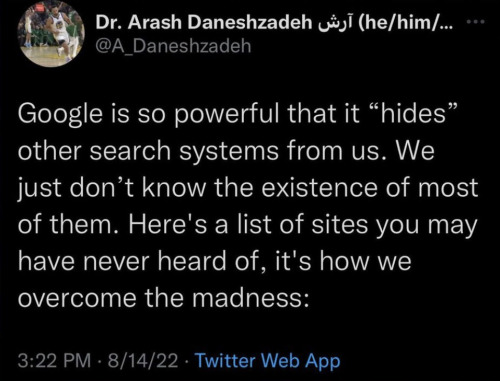

refseek.com
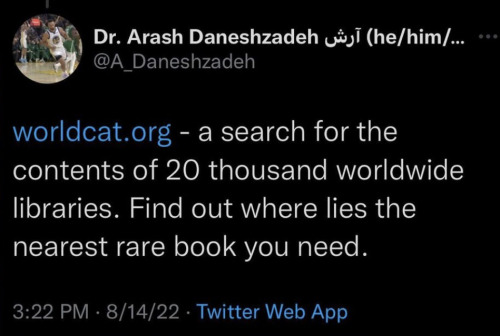
www.worldcat.org/

link.springer.com

http://bioline.org.br/
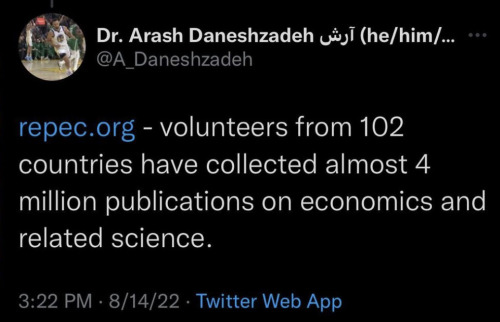
repec.org

science.gov

pdfdrive.com
Neurodivergent: a list
A list of those who are included under the "neurodivergent" label.
Applied Neurodiversity
Dyscalculia
Dysgraphia
Dyslexia
Dysnomia
Dyspraxia
Dissociative disorders
Depersonalization-derealization disorder (DpDr)
Dissociative amnesia
Dissociative identity disorder (DID)
Other specified dissociative disorder (OSDD)
Unspecified dissociative disorder
Eating disorders:
Anorexia nervosa
Avoidant restrictive food intake disorder (ARFID)
Binge-eating disorder
Bullimia nervosa
Pica
Mental illnesses:
Anxiety
Delusional disorder
Depression
Complex post-traumatic stress disorder (CPTSD)
Post-traumatic stress disorder (PTSD)
Personality Disorders:
Cluster A:
Paranoid personality disorder
Schizoid personality disorder
Schizotypal personality disorder
Cluster B:
Antisocial personality disorder
Borderline personality disorder (BPD)
Histrionic personality disorder (HPD)
Narcissistic personality disorder (NPD)
Cluster C:
Avoidant personality disorder
Dependent personality disorder
Obsessive-compulsive personality disorder
Other:
Personality change due to another medical condition
Personality disorder not otherwise specified (PD-NOS)
personality disorder trait specified (PD-TS)
Tic disorder
Chronic motor or vocal tic disorder
Tourette syndrome
Transient tic disorder
other
Acquired Brain Injuries (ABI)
Angelmans Syndrome
Auditory processing disorder
Autism spectrum disorder (ASD)
Attention deficit hyperactivity disorder (ADHD)
Body integrity identity disorder (BIID)
Bipolar disorder
Depersonalization-derealization disorder (DPDR)
Down syndrome
Fetal alcohol spectrum disorder (FASD)
Fragile X syndrome
Hyperlexia
Intellectual disability
Irlen Syndrome
Meares-Irlen Syndrome
Obsessive-compulsive disorder (OCD)
Obsessive love disorder (OLD)
Pediatric autoimmune neuropsychiatric disorders associated with streptococcal infections (PANDAS)
Prader-Willi Syndrome (PWS)
Prosopagnosia
Savant Syndrome
Schizophrenia
Synesthesia
Williams Syndrome/Williams Beuren Syndrome
This is by no means a full list.
If you: see that I'm missing something, or
want me to rephrase something, or
have a resource to share, or
have a suggestion for organizing the list
please let me know in the comments/rebloggs.
I'm autistic and I love making lists. I also hope it may help spread awareness about neurodivergent people!
I am not an expert. But I do believe that we should be careful to include people in the neurodivergent umbrella. We are stronger together.
Updated: 9/2/24
Dealing With Executive Dysfunction - A Masterpost
The “getting it done in an unconventional way” method.
The “it’s not cheating to do it the easy way” method.
The “fuck what you’re supposed to do” method.
The “get stuff done while you wait” method.
The “you don’t have to do everything at once” method.
The “it doesn’t have to be permanent to be helpful” method.
The “break the task into smaller steps” method.
The “treat yourself like a pet” method.
The “it doesn’t have to be all or nothing” method.
The “put on a persona” method.
The “act like you’re filming a tutorial” method.
The “you don’t have to do it perfectly” method.
The “wait for a trigger” method.
The “do it for your future self” method.
The “might as well” method.
The “when self discipline doesn’t cut it” method.
The “taking care of yourself to take care of your pet” method.
The “make it easy” method.
The “junebugging” method.
The “just show up” method.
The “accept when you need help” method.
The “make it into a game” method.
The “everything worth doing is worth doing poorly” method.
The “trick yourself” method.
The “break it into even smaller steps” method.
The “let go of should” method.
The “your body is an animal you have to take care of” method.
The “fork theory” method.
The “effectivity over aesthetics” method.
DO NOT LET SOCIAL MEDIA TURN YOU INTO AN AMERICAN
Hey, if you have half a minute and care about the LGTBQIA+ community in the EU, I'd suggest you take a look at this initiative to ban conversion therapies in the EU.
1 million people are required to sign, but there's barely 100k. The form takes less than a minute, it only requires your ID, name and surname.
Please, help spread the initiative so that it can reach the goal ASAP!
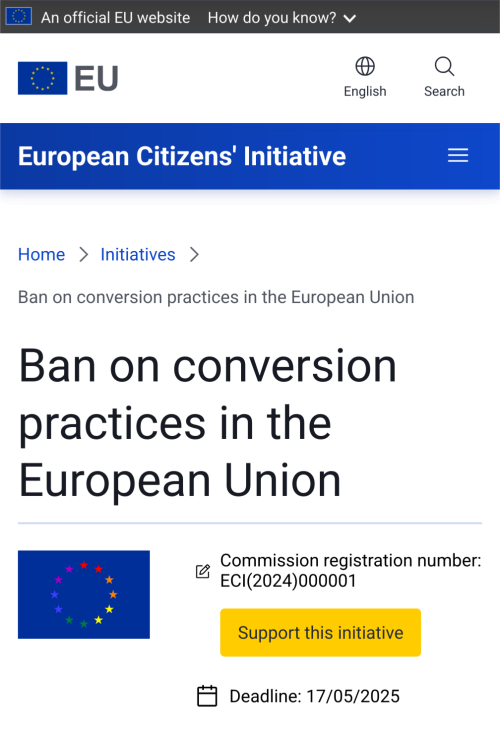
I made a couple of flow charts for the ace and aro spectrums! Not meant to be taken 100% factual- you know yourself better than a basic flowchart. They’re mainly just for fun, though they can also be a good start for anyone questioning!


(Free to use as long as you keep my url on them and aren’t making money off it!)

Elon’s being weird again. Threatening everyone on twitter for calling his weird friends weird.
MBTI Notes
I am not an expert in MBTI, so I may change my notes later
___
Cognitive functions
Issue with 16personalities
Type's main stacks
Judging Functions: Te | Ti | Fe | Fi
Perceiving Functions: Se | Si | Ne | Ni
___
- Grips -
Te | Ti | Fe | Fi
Se |
___
- Loops -
INTJ | ENTJ | INTP
___
- For fun -
View of each mbti type by INTJ (me)
Color palettes
___
Other lists:
Enneagram Notes
Kpop idol typology
Table of Contents
Typing Guide
By Fandom
By Type
MBTI Stuff
Crash Course on MBTI: The Eight Functions
Loops & Grips: What is it?
Character Typing Advice
How to Avoid Mistyping
Enneagram
Enneagram + MBTI Combo Breakdowns
New Links
I cleaned up some of the links on the website, which temporarily made the page links invalid. These are the new Enneagram links.
Enneagram 1: The Reformer
Enneagram 2: The Helper
Enneagram 3: The Achiever
Enneagram 4: The Individualist
Enneagram 5: The Investigator
Enneagram 6: The Loyalist
Enneagram 7: The Enthusiast
Enneagram 8: The Challenger
Enneagram 9: The Peacemaker
US CRIMES AGAINST HUMANITY & GLOBAL TERRORISM
US Use of Weapons of Mass Destruction The indiscriminate use of bombs by the US, usually outside a declared war situation, for wanton destruction, for no military objectives, whose targets and victims are civilian populations, or what we now call “collateral damage.”
Japan (1945)
China (1945-46)
Korea & China (1950-53)
Guatemala (1954, 1960, 1967-69)
Indonesia (1958)
Cuba (1959-61)
Congo (1964)
Peru (1965)
Laos (1964-70)
Vietnam (1961-1973)
Cambodia (1969-70)
Grenada (1983)
Lebanon (1983-84)
Libya (1986)
El Salvador (1980s)
Nicaragua (1980s)
Iran (1987)
Panama (1989)
Iraq (1991-2000)
Kuwait (1991)
Somalia (1993)
Bosnia (1994-95)
Sudan (1998)
Afghanistan (1998)
Pakistan (1998)
Yugoslavia (1999)
Bulgaria (1999)
Macedonia (1999)
US Use of Chemical & Biological Weapons The US has refused to sign Conventions against the development and use of chemical and biological weapons, and has either used or tested (without informing the civilian populations) these weapons in the following locations abroad:
Bahamas (late 1940s-mid-1950s)
Canada (1953)
China and Korea (1950-53)
Korea (1967-69)
Vietnam, Laos, Cambodia (1961-1970)
Panama (1940s-1990s)
Cuba (1962, 69, 70, 71, 81, 96)
And the US has tested such weapons on US civilian populations, without their knowledge, in the following locations:
Watertown, NY and US Virgin Islands (1950)
SF Bay Area (1950, 1957-67)
Minneapolis (1953)
St. Louis (1953)
Washington, DC Area (1953, 1967)
Florida (1955)
Savannah GA/Avon Park, FL (1956-58)
New York City (1956, 1966)
Chicago (1960)
And the US has encouraged the use of such weapons, and provided the technology to develop such weapons in various nations abroad, including:
Egypt
South Africa
Iraq
US Political and Military Interventions since 1945 The US has launched a series of military and political interventions since 1945, often to install puppet regimes, or alternatively to engage in political actions such as smear campaigns, sponsoring or targeting opposition political groups (depending on how they served US interests), undermining political parties, sabotage and terror campaigns, and so forth. It has done so in nations such as
China (1945-51)
South Africa (1960s-1980s)
France (1947)
Bolivia (1964-75)
Marshall Islands (1946-58)
Australia (1972-75)
Italy (1947-1975)
Iraq (1972-75)
Greece (1947-49)
Portugal (1974-76)
Philippines (1945-53)
East Timor (1975-99)
Korea (1945-53)
Ecuador (1975)
Albania (1949-53)
Argentina (1976)
Eastern Europe (1948-56)
Pakistan (1977)
Germany (1950s)
Angola (1975-1980s)
Iran (1953)
Jamaica (1976)
Guatemala (1953-1990s)
Honduras (1980s)
Costa Rica (mid-1950s, 1970-71)
Nicaragua (1980s)
Middle East (1956-58)
Philippines (1970s-90s)
Indonesia (1957-58)
Seychelles (1979-81)
Haiti (1959)
South Yemen (1979-84)
Western Europe (1950s-1960s)
South Korea (1980)
Guyana (1953-64)
Chad (1981-82)
Iraq (1958-63)
Grenada (1979-83)
Vietnam (1945-53)
Suriname (1982-84)
Cambodia (1955-73)
Libya (1981-89)
Laos (1957-73)
Fiji (1987)
Thailand (1965-73)
Panama (1989)
Ecuador (1960-63)
Afghanistan (1979-92)
Congo (1960-65, 1977-78)
El Salvador (1980-92)
Algeria (1960s)
Haiti (1987-94)
Brazil (1961-64)
Bulgaria (1990-91)
Peru (1965)
Albania (1991-92)
Dominican Republic (1963-65)
Somalia (1993)
Cuba (1959-present)
Iraq (1990s)
Indonesia (1965)
Peru (1990-present)
Ghana (1966)
Mexico (1990-present)
Uruguay (1969-72)
Colombia (1990-present)
Chile (1964-73)
Yugoslavia (1995-99)
Greece (1967-74)
US Perversions of Foreign Elections The US has specifically intervened to rig or distort the outcome of foreign elections, and sometimes engineered sham “demonstration” elections to ward off accusations of government repression in allied nations in the US sphere of influence. These sham elections have often installed or maintained in power repressive dictators who have victimized their populations. Such practices have occurred in nations such as:
Philippines (1950s)
Italy (1948-1970s)
Lebanon (1950s)
Indonesia (1955)
Vietnam (1955)
Guyana (1953-64)
Japan (1958-1970s)
Nepal (1959)
Laos (1960)
Brazil (1962)
Dominican Republic (1962)
Guatemala (1963)
Bolivia (1966)
Chile (1964-70)
Portugal (1974-75)
Australia (1974-75)
Jamaica (1976)
El Salvador (1984)
Panama (1984, 89)
Nicaragua (1984, 90)
Haiti (1987, 88)
Bulgaria (1990-91)
Albania (1991-92)
Russia (1996)
Mongolia (1996)
Bosnia (1998)
US Versus World at the United Nations The US has repeatedly acted to undermine peace and human rights initiatives at the United Nations, routinely voting against hundreds of UN resolutions and treaties. The US easily has the worst record of any nation on not supporting UN treaties. In almost all of its hundreds of “no” votes, the US was the “sole” nation to vote no (among the 100-130 nations that usually vote), and among only 1 or 2 other nations voting no the rest of the time. Here’s a representative sample of US votes from 1978-1987:
US Is the Sole “No” Vote on Resolutions or Treaties
For aid to underdeveloped nations
For the promotion of developing nation exports
For UN promotion of human rights
For protecting developing nations in trade agreements
For New International Economic Order for underdeveloped nations
For development as a human right
Versus multinational corporate operations in South Africa
For cooperative models in developing nations
For right of nations to economic system of their choice
Versus chemical and biological weapons (at least 3 times)
Versus Namibian apartheid
For economic/standard of living rights as human rights
Versus apartheid South African aggression vs. neighboring states (2 times)
Versus foreign investments in apartheid South Africa
For world charter to protect ecology
For anti-apartheid convention
For anti-apartheid convention in international sports
For nuclear test ban treaty (at least 2 times)
For prevention of arms race in outer space
For UNESCO-sponsored new world information order (at least 2 times)
For international law to protect economic rights
For Transport & Communications Decade in Africa
Versus manufacture of new types of weapons of mass destruction
Versus naval arms race
For Independent Commission on Disarmament & Security Issues
For UN response mechanism for natural disasters
For the Right to Food
For Report of Committee on Elimination of Racial Discrimination
For UN study on military development
For Commemoration of 25th anniversary of Independence for Colonial Countries
For Industrial Development Decade in Africa
For interdependence of economic and political rights
For improved UN response to human rights abuses
For protection of rights of migrant workers
For protection against products harmful to health and the environment
For a Convention on the Rights of the Child
For training journalists in the developing world
For international cooperation on third world debt
For a UN Conference on Trade & Development
US Is 1 of Only 2 “No” Votes on Resolutions or Treaties
For Palestinian living conditions/rights (at least 8 times)
Versus foreign intervention into other nations
For a UN Conference on Women
Versus nuclear test explosions (at least 2 times)
For the non-use of nuclear weapons vs. non-nuclear states
For a Middle East nuclear free zone
Versus Israeli nuclear weapons (at least 2 times)
For a new world international economic order
For a trade union conference on sanctions vs. South Africa
For the Law of the Sea Treaty
For economic assistance to Palestinians
For UN measures against fascist activities and groups
For international cooperation on money/finance/debt/trade/development
For a Zone of Peace in the South Atlantic
For compliance with Intl Court of Justice decision for Nicaragua vs. US.
**For a conference and measures to prevent international terrorism (including its underlying causes)
For ending the trade embargo vs. Nicaragua
US Is 1 of Only 3 “No” Votes on Resolutions and Treaties
Versus Israeli human rights abuses (at least 6 times)
Versus South African apartheid (at least 4 times)
Versus return of refugees to Israel
For ending nuclear arms race (at least 2 times)
For an embargo on apartheid South Africa
For South African liberation from apartheid (at least 3 times)
For the independence of colonial nations
For the UN Decade for Women
Versus harmful foreign economic practices in colonial territories
For a Middle East Peace Conference
For ending the embargo of Cuba (at least 10 times)
In addition, the US has:
Repeatedly withheld its dues from the UN
Twice left UNESCO because of its human rights initiatives
Twice left the International Labor Organization for its workers rights initiatives
Refused to renew the Antiballistic Missile Treaty
Refused to sign the Kyoto Treaty on global warming
Refused to back the World Health Organization’s ban on infant formula abuses
Refused to sign the Anti-Biological Weapons Convention
Refused to sign the Convention against the use of land mines
Refused to participate in the UN Conference Against Racism in Durban
Been one of the last nations in the world to sign the UN Covenant on
Political & Civil Rights (30 years after its creation)
Refused to sign the UN Covenant on Economic & Social Rights
Opposed the emerging new UN Covenant on the Rights to Peace, Development & Environmental Protection
Sampling of Deaths >From US Military Interventions & Propping Up Corrupt Dictators (using the most conservative estimates)
Nicaragua – 30,000 dead
Brazil – 100,000 dead
Korea – 4 million dead
Guatemala – 200,000 dead
Honduras – 20,000 dead
El Salvador – 63,000 dead
Argentina – 40,000 dead
Bolivia – 10,000 dead
Uruguay – 10,000 dead
Ecuador – 10,000 dead
Peru – 10,000 dead
Iraq – 1.3 million dead
Iran – 30,000 dead
Sudan – 8-10,000 dead
Colombia – 50,000 dead
Panama – 5,000 dead
Japan – 140,000 dead
Afghanistan – 10,000 dead
Somalia – 5000 dead
Philippines – 150,000 dead
Haiti – 100,000 dead
Dominican Republic – 10,000 dead
Libya – 500 dead
Macedonia – 1000 dead
South Africa – 10,000 dead
Pakistan – 10,000 dead
Palestine – 40,000 dead
Indonesia – 1 million dead
East Timor – 1/3-½ of total population
Greece – 10,000 dead
Laos – 600,000 dead
Cambodia – 1 million dead
Angola – 300,000 dead
Grenada – 500 dead
Congo – 2 million dead
Egypt – 10,000 dead
Vietnam – 1.5 million dead
Chile – 50,000 dead
Other Lethal US Interventions CIA Terror Training Manuals Development and distribution of training manuals for foreign military personnel or foreign nationals, including instructions on assassination, subversion, sabotage, population control, torture, repression, psychological torture, death squads, etc.
Specific Torture Campaigns Creation and launching of direct US campaigns to support torture as an instrument of terror and social control for governments in Greece, Iran, Vietnam, Bolivia, Uruguay, Brazil, Guatemala, El Salvador, Honduras, and Panama
Supporting and Harboring Terrorists The promotion, protection, arming or equipping of terrorists such as:
Klaus Barbie and other German Nazis, and Italian and Japanese fascists, after WW II
Manual Noriega (Panama), Saddam Hussein (Iraq), Rafael Trujillo (Dominican Republic), Osama bin Laden (Afghanistan), and others whose terrorism has come back to haunt us
Running the Higher War College (Brazil) and first School of the Americas (Panama), which gave US training to repressors, death squad members, and torturers (the second School of the Americas is still running at Ft. Benning GA)
Providing asylum for Cuban, Salvadoran, Guatemalan, Haitian, Chilean, Argentinian, Iranian, South Vietnamese and other terrorists, dictators, and torturers
Assassinating World Leaders Using assassination as a tool of foreign policy, wherein the CIA has initiated assassination attempts against at least 40 foreign heads of state (some several times) in the last 50 years, a number of which have been successful, such as: Patrice Lumumba (Congo), Rafael Trujillo (Dominican Republic), Ngo Dihn Diem (Vietnam) Salvador Allende (Chile)
Arms Trade & US Military Presence
The US is the world’s largest seller of weapons abroad, arming dictators, militaries, and terrorists that repress or victimize their populations, and fueling scores of violent conflicts around the globe
The US is the world’s largest provider of live land mines which, even in peacetime, kill or injure at least several people around the world each day
The US has military bases in at least 50 nations around the world, which have led to frequent victimization of local populations.
The US military has been bombing one Middle Eastern or Muslim nation or another almost continuously since 1983, including Lebanon, Libya, Syria, Iran, the Sudan, Afghanistan, and Iraq (almost daily bombings since 1991)
This, then, is a sampling of American foreign policies over the last 50 years. The FBI uses the following definition for Terrorism: “The unlawful use of force or violence committed by a group or individual, who has some connection to a foreign power or whose activities transcend national boundaries, against persons or property to intimidate or coerce a government, the civilian population or any segment thereof, in furtherance of political or social objectives.” This sounds like the terrorism we just experienced. It also sounds a lot like the US policies and actions since 1945 that I’ve just described.
This is a version of an an original page atributed to Robert Elias, a US Professor of Political Science , a list which, like so many others, has otherwise ‘disappered’
via https://web.archive.org/web/20161125052245/http://www.the-philosopher.co.uk/whocares/popups/warcrimes.htm







